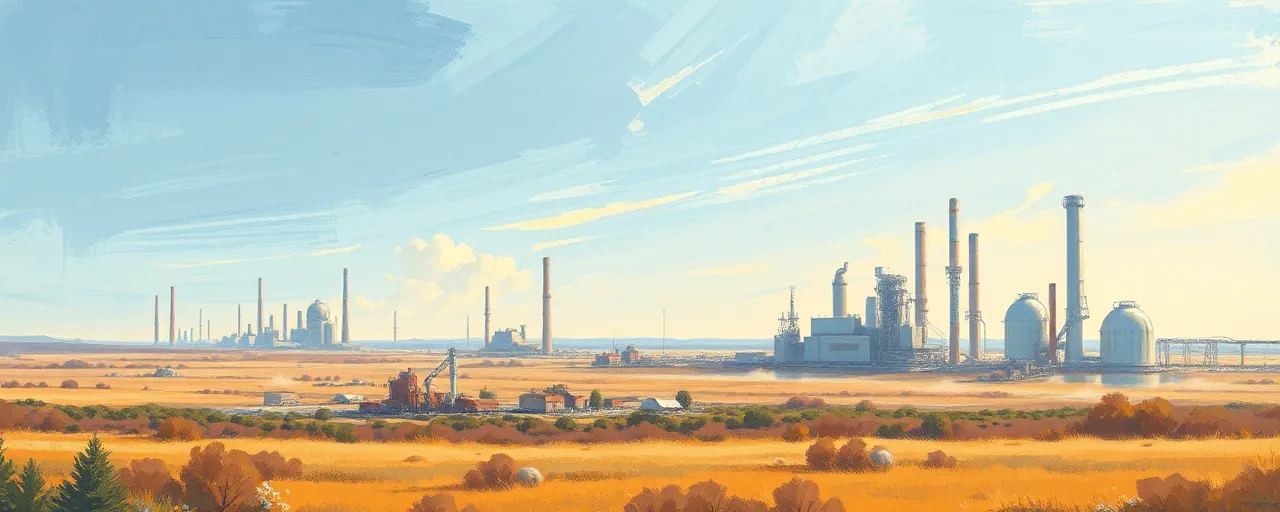A Powerhouse in Play
Texas has long been an economic juggernaut, and its influence is once again in the spotlight. On April 22, 2025, Governor Greg Abbott and U.S. Treasury Secretary Scott Bessent held a call to discuss the state’s booming economy, its pivotal role in international trade, and the push for federal tax cuts. Their conversation underscores Texas’ unique position: a state driving national growth while navigating complex global and federal dynamics.
The Texas economy is a force to be reckoned with. It accounts for 16% of U.S. trade and has held the title of the nation’s top exporting state for 23 consecutive years. From energy to technology, Texas’ diverse industries, low taxes, and streamlined regulations have drawn businesses and workers alike. Yet, with new tariffs and shifting trade policies, the state faces challenges that could ripple through its markets and beyond.
Energy and Exports: Texas’ Economic Engine
At the heart of Texas’ success is its energy sector. The state leads the nation in energy production, particularly in liquefied natural gas (LNG) exports. In 2023 and 2024, the U.S. became the world’s largest LNG exporter, with Texas playing a central role. Projects like Golden Pass LNG and Corpus Christi Stage 3 are set to boost U.S. export capacity by 19% in 2025 and 15% in 2026. Abbott highlighted this growth, noting Texas’ contribution to both economic prosperity and global energy security.
However, the LNG boom isn’t without complications. China’s recent suspension of U.S. LNG imports, driven by trade disputes, has created uncertainty for Texas exporters. Environmental concerns also loom large, as Europe and Asia scrutinize the methane emissions tied to LNG production. Balancing economic gains with sustainability remains a delicate task for state and federal policymakers.
Trade With Mexico: A Vital Lifeline
Trade, particularly with Mexico, is another cornerstone of Texas’ economy. As the state’s largest trading partner, Mexico is integral to Texas’ supply chains and export markets. Abbott and Bessent discussed ongoing U.S. trade negotiations, emphasizing the need for stable policies to protect this relationship. Texas’ proximity to Mexico has fueled its export dominance, but recent federal tariff hikes— including a proposed 25% duty on Mexican goods— raise concerns.
Business leaders in Texas warn that tariffs could disrupt supply chains, raise costs, and threaten jobs. The Dallas Federal Reserve estimates that such tariffs could shave 1.5 percentage points off Texas’ economic growth and eliminate 100,000 jobs. Despite these risks, Texas’ robust $336 billion budget and $28.5 billion rainy day fund provide a buffer, allowing the state to weather potential economic turbulence.
Federal Tax Cuts: A Shared Priority
The call also touched on federal tax cut legislation, a key focus for both state and federal officials. With major provisions of the 2017 Tax Cuts and Jobs Act set to expire at the end of 2025, Congress is working on a new tax bill. Bessent noted that the administration is collaborating with lawmakers to expedite the process, aiming for President Donald Trump’s signature. For Texas, which thrives on low taxes, federal reforms could amplify its competitive edge.
Yet, not everyone sees tax cuts as a universal solution. Some economists argue that further reductions could strain federal revenues, potentially limiting funds for state programs like infrastructure or workforce training. Others contend that tax relief fuels investment and job creation, particularly in states like Texas with no state income tax. The debate reflects broader tensions over how to balance growth with fiscal responsibility.
Navigating a Complex Landscape
Texas’ economic strategy doesn’t exist in a vacuum. The state’s success is tied to federal policies, global markets, and regional competition. States like Florida and North Carolina are also vying for businesses with their own tax incentives and sector-specific investments. Meanwhile, the federal government’s “America First” trade agenda, including a 10% baseline tariff on all imports, adds another layer of complexity for Texas exporters.
The conversation between Abbott and Bessent highlights a broader trend: states and the federal government are increasingly interdependent. From the New Deal to the COVID-19 pandemic, economic crises have forged closer collaboration, but tensions over autonomy and priorities persist. Texas, with its outsized economic clout, is a key player in shaping this dynamic.
Looking Ahead
Texas stands at a crossroads. Its economic strengths— energy, trade, and a business-friendly climate— position it well for continued growth. Yet, challenges like tariffs, environmental pressures, and federal policy shifts demand careful navigation. The dialogue between Abbott and Bessent signals a commitment to aligning state and federal goals, but the path forward will require adaptability and foresight.
For Texans, the stakes are tangible: jobs, prices, and opportunities hang in the balance. As the state continues to lead the nation in exports and innovation, its ability to balance local priorities with global realities will shape not just its own future, but the nation’s economic trajectory.
